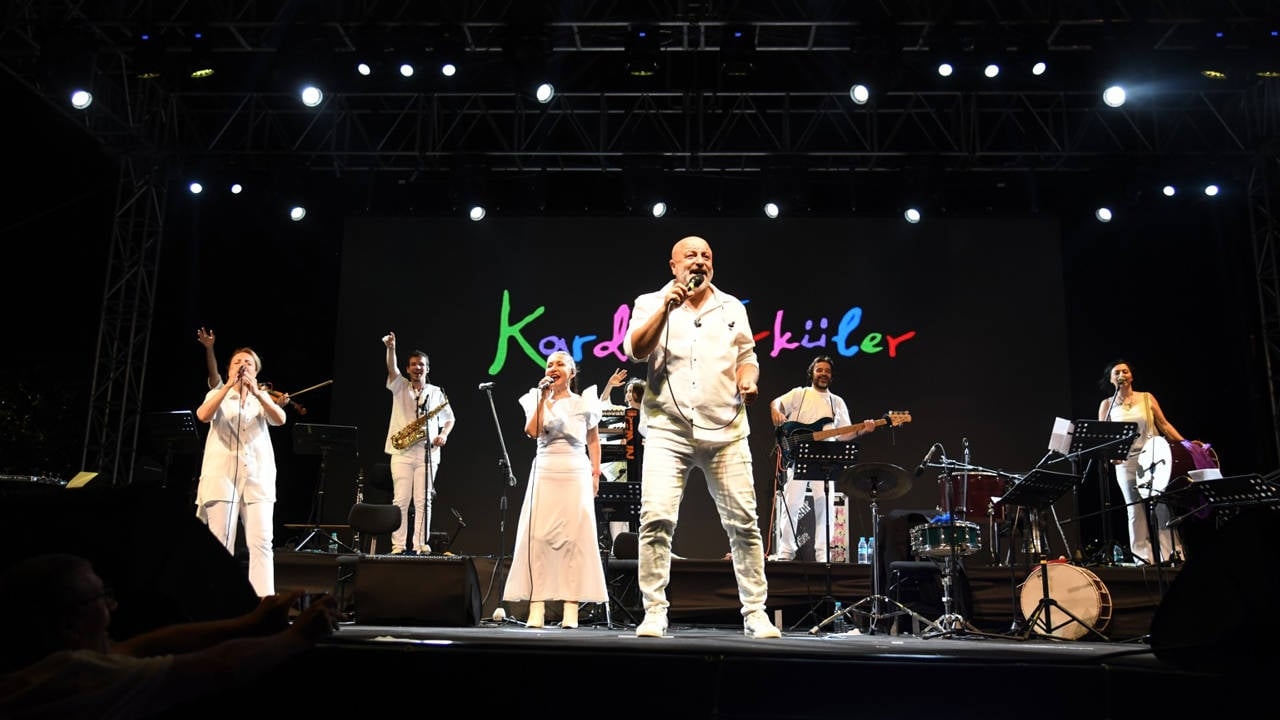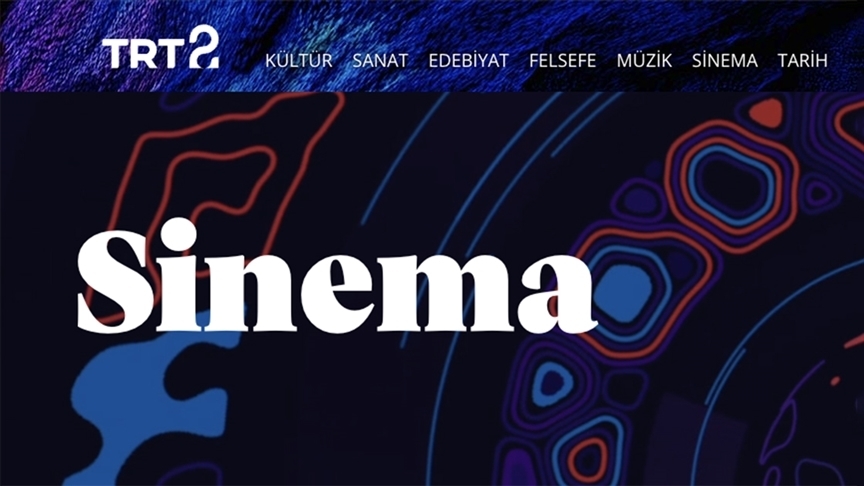The remains of the 32nd Adana Altınkoza Documentary Selection

Fatosh YAPICI
We've just completed the 32nd Adana Film Festival, held from September 22nd to 28th. The festival welcomed the film community and audiences with a rich program filled with both prominent productions from world cinema and features, shorts, documentaries, and interviews produced in Turkey throughout the year. Despite all the painful challenges facing the country, this meticulously organized festival allowed independent filmmakers, who stubbornly continue to make films in our country, to connect with each other and Adana audiences in cinemas. Witnessing Adana audiences' increasing participation in the festival over the course of seven days was both gratifying and motivating.
Unfortunately, I wasn't able to watch all the films at the festival. As an editor who has been involved in documentary film production for many years, my priority was naturally the documentaries in the competition. While not as crowded as the feature and short film screenings, Adana audiences were there for us during the documentaries.
With Araf , directed by Burcu Özkaya Günaydın, the self-healing efforts of women trying to overcome the mourning of their losses and heal their wounds in Antakya after the earthquake that devastated us all on February 6, 2023; With My Grandfather's House, directed by Gülten Taranç and Ragıp Taranç, the story of a young woman from the third generation, whose grandfather came to Turkey from Greece after the 1974 Cyprus Peace Operation and whose father immigrated from Bulgaria to Turkey after 1989, and the traces of migration passed on to the next generations; With Döne , directed by Bulut Renas Kaçan, the story of the struggle of the local people and nature, who have lived in harmony for thousands of years, against the threat of extinction, with the plans to establish geothermal facilities in the Orhanlı Valley of Seferihisar; With Eskisi Gibi, directed by Sibel Karakurt, the physical and emotional recovery processes of the children affected by the February 6 earthquake who lost their limbs; Atıl İnaç's documentary "A Humanist Genius, Gazi Yaşargil" shows the extraordinary, limitless character and life journey of professor Dr. G. Yaşargil; Çayan Demirel and Ayşe Çetinbaş's film "30 Years with Kardeş Türküler" shows the 30-year-long adventure of Kardeş Türküler, along with the crises that have shaped the cornerstones of political and social events in our country's recent history; Murat Can Bilgincan's film "Report Card " With the 2017 referendum, we watched the story of a family polarized by the 2017 referendum that escalated into a blood feud; with Melik Külekçi’s Manguel’s Turkey Journey: In Tanpınar’s Footsteps , we watched Argentinian author Alberto Manguel’s efforts as a Western writer to understand Tanpınar and contemporary Turkey by visiting Istanbul, Erzurum, Bursa, Konya and Ankara in Ahmet Hamdi Tanpınar’s book “Five Cities”; with Ömer Faruk Çetin’s film Muzaffer , we watched the silenced scream of Dulkadir Village in Kütahya, which was poisoned by cyanide and had to be abandoned; and with İbrahim İzol’s Nikita “Death of the Goddess,” we watched him confront us with the water crisis that threatens the country’s extinction due to uncontrolled and unsanctioned industrialization, specifically regarding the Nikita Creek in Ayvalık.
Coming from the industry, I understand how difficult filmmaking, especially documentary filmmaking, can be due to a lack of financial support, so I followed all the documentaries with great enthusiasm and zeal. I wholeheartedly congratulate the filmmakers of all the films in the selection, the pre-selection jury who prepared such a significant selection for us, and the main jury whose evaluations finalized the competition. Watching all the documentaries in the selection, I realized, both as an editor and a viewer, that the selection had a distinct character. As can be seen from the work on screen, when we look at the teams involved, we see films created by teams comprised of filmmakers with backgrounds in journalism and those who have previously produced fiction or documentaries.
The efforts of both sides to confront us with events and facts that concern the world, and especially our country, our recent history, or contemporary issues are undoubtedly invaluable. While journalistic teams possess the advantages of capturing stories from real life, maintaining distance from characters, and possessing a greater command of interview techniques due to their training and professional reflexes, I've observed that film-based teams possess the skills to establish film language, effectively construct the dramaturgy of the story, create cinematic visuals, and construct a film's emotional landscape in a purposeful way. However, I must also point out that journalistic teams can only bring these qualities and reflexes to the forefront when they construct a strong narrative and possess a deeper understanding of the filmic language. If you don't adhere to the narrative framework of cinema, you're failing to fully convey your point to the documentary audience, which already requires effort to watch. In these works, I've observed that the plot is very well captured and the characters are excellent, but unfortunately, both the camerawork and the editing style detract from the film's quality of being a feature film.
I think the most significant stylistic issue common to these films in the selection was their use of music. Music is a crucial layer in a film, guiding emotions and thoughts. If you layer music that doesn't fully reflect the film's character, especially from beginning to end, in the right place, you detach the film from the natural, life-like reality reflected on the screen and force it into a different form. I wish these films had used sound effects more often than music. They would have served the film's reality and emotion better. Alternatively, the use of narration, or voice-over, was another stylistic issue. Some films used voice-overs. The use of voice-overs is, of course, the director's choice, but this choice determines the film's entire narrative structure. In the films I've seen, these voice-overs were written in such lengthy texts that they didn't allow the film to speak for itself, becoming didactic. In one film, a voice-over began with voice-overs, but the voice-over was never used again in the rest of the film, creating the impression that the overall structure of the film wasn't well-structured. The interviews were well-done, but in some cases, poor editing led to a distraction. In some films, the subject matter, which was also criminal, was so poorly explained that the director resorted to text when he couldn't explain it. While we were trying to read the text, wondering who did what to whom and how the incident happened, the film ended, and the director's true message, based on the events in question, was not conveyed effectively. So, why am I sharing these assessments? I believe these colleagues can do better, and that our documentary filmmaking will also improve by increasing the interaction between journalists and filmmakers.
Indeed, " As We Used to Be " distinguished itself from the other films in the selection, which was prepared with journalistic reflexes, and won the Best Documentary award for effectively conveying its sensitive and sensitive subject matter by mastering film grammar, visualization, and editing. When we look at the personal background of its director, Sibel Karakurt, we see that she began her career with "32. Gün" (The 32nd Day). Her documentary "Ceska Murders" was broadcast on Al Jazeera International. In other words, she possesses journalistic reflexes and has primarily produced documentaries about social events, primarily broadcast on television. However, with " As We Used to Be ," she was able to blend her own background with the grammar of film language, thus distinguishing herself from other films of the same ilk and creating a film that deeply resonates with viewers. The directors of " Kardeş Türküler ile 30 Years with Kardeş Türküler" (Which won the Special Jury Prize), Çayan Demirel and Ayşe Çetinbaş, are directors and producers who have been involved in documentary filmmaking for years, both of whom we know and whose previous films are known. As far as I know, both studied economics. However, because they have been in the film industry for many years, the documentarians are well-versed in documentary filmmaking techniques and can convey their narrative through a cinematographic narrative. The film is the result of 13 years of work. The immense effort put into the film is evident in the archive footage and the narrative language they successfully employ to tell the story of Turkey's past 30 years and Kardeş Türküler's journey from its founding to the present. The director of the honorable mention film, Yarım (Cycle), is Bulut Renas Kaçan. He has previously directed a documentary, Gezgin (Traveler), about the life of a 15-year-old shepherd, and fictional films, Kafes (Cage) and Çağ (Age). He also directed, shot, and edited the film. The film begins with beautiful images of the Orhanlı Valley's natural habitat. Watching these, I thought, "Please don't make this place look this beautiful; let it remain undiscovered, hidden." Because, especially recently, we've seen what greedy and dirty hands can do to all the beauty in the country. As the film progresses, you realize those hands have already reached there. However, thanks to the local people's strong resistance, the land was not allowed to be plundered. In the film's development, you learn in detail how traditional olive cultivation is made possible through patience and hard work, in harmony with nature. While you might wonder why the director chose such a detailed narrative, the film, with its twisted plot, confronts us with the imminent threat of extinction. By employing this fictional language, the film reveals that this life cycle, which has been harmonious for thousands of years with its wolves, birds, squirrels, snakes, people, and olives, was not easily established but sustained through patience and hard work. It offers hope through the local people who fight to preserve it.
In short, we watched a valuable selection of documentaries in Adana, crafted with great effort and exploring the topics they explore. Unfortunately, documentaries are a genre that isn't discussed as much as feature-length and short films. This is a key reason for writing this article. As both a veteran of the industry and a documentary spectator, I find the work being done in documentary cinema invaluable and want to discuss it further. Because documentary film, along with its team, records the reality of the past and present through the director's lens and perspective, carrying it forward into the future. Therefore, if we can truly internalize cinema's narrative language, narrative structure, and formal styles, and even develop them by subverting them in some cases, I believe we can reach a wider audience.
*I would like to thank Necla Algan for encouraging me to write this article.
BirGün





